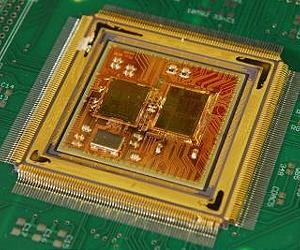
Georgia Tech engineers have led a five-year project that has developed a new approach to space electronics, which has the potential to change how space vehicles and other valuable instruments are designed. At the center of these developments are silicon-germanium (SiGe) based technologies that enable resistance to changing temperatures and space radiation in electronics.
The Project (titled “SiGe Integrated Electronics for Extreme Environments”) is a 63 month, $12 million collaborated effort, funded by NASA. Besides Georgia Tech, the team includes researchers and engineers from the University of Arkansas, the University of Maryland, the University of Tennessee, Auburn University and Vanderbilt University. BAE Systems, Boeing Co., IBM Corp., Lynguent Inc. and NASA’s Jet Propulsion Lab were also included in the project.
"The team's overall task was to develop an end-to-end solution for NASA - a tested infrastructure that includes everything needed to design and build extreme-environment electronics for space missions," says John Cressler, who is the Ken Byers Professor in Georgia Tech's School of Electrical and Computer Engineering. Cressler is the principal investigator and overall team leader for the project.
Silicon-germanium combines silicon and germanium (at the nanoscale level), and produces a tough material that also improves speed, flexibility and robustness. That robustness is the essence of SiGe, as it gives the material the ability to operate in space conditions without adding large radiation shields and power draining temperature controlling units. Its lighter, smaller, less complex and more energy efficient.
"Our team used a mature silicon-germanium technology - IBM's 0.5 micron SiGe technology - that was not intended to withstand deep-space conditions," Cressler said, "Without changing the composition of the underlying silicon-germanium transistors, we leveraged SiGe's natural merits to develop new circuit designs - as well as new approaches to packaging the final circuits - to produce an electronic system that could reliably withstand the extreme conditions of space."
